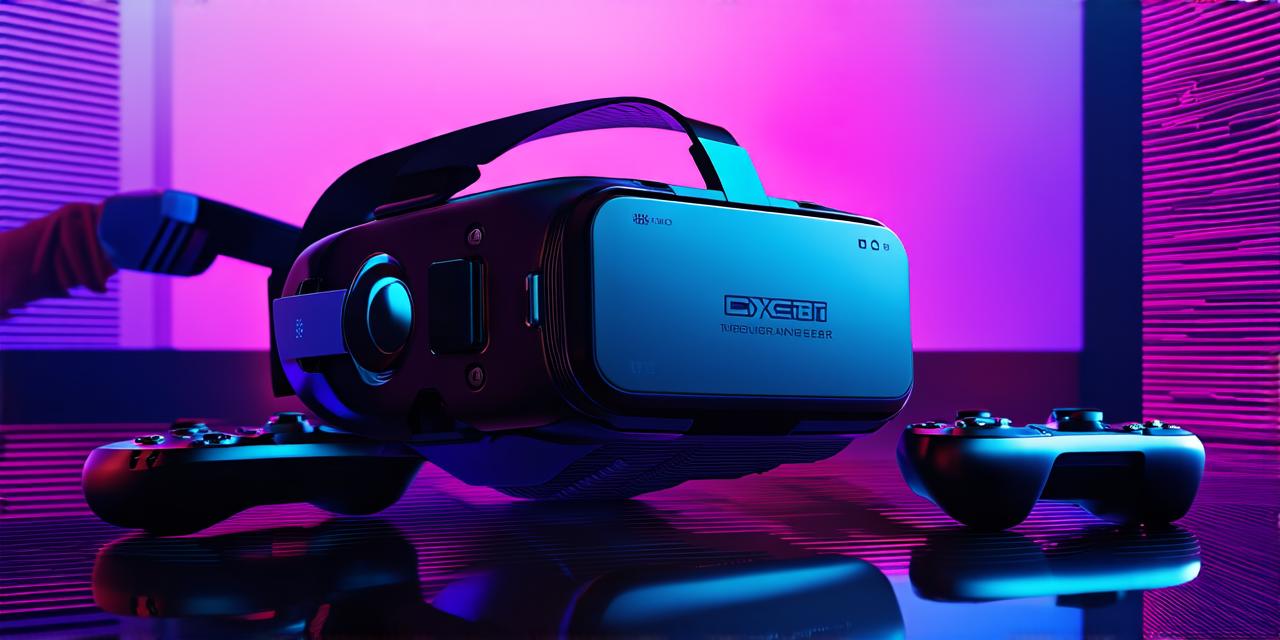Where to Buy Virtual Reality Gear: A Comprehensive Guide for Developers
Virtual reality (VR) is a rapidly growing technology that has already transformed the way we experience gaming and entertainment. But with its increasing popularity, VR developers are also looking for ways to purchase VR gear to enhance their workflow and create more immersive experiences. In this comprehensive guide, we will explore the best options for buying VR equipment, including headsets, controllers, sensors, and other accessories.
Table of Contents
- Introduction: What is Virtual Reality?
- Types of VR Headsets
- Best VR Headset Options for Developers
- How to Choose the Right VR Headset
- Other VR Equipment You Need to Know About
- Summary: The Future of Virtual Reality
1. Introduction: What is Virtual Reality?
Virtual reality is a technology that simulates 3D environments in real-time, allowing users to experience them as if they were physically present. It involves the use of specialized headsets, sensors, and other equipment that track a user’s movements and adjust the environment accordingly.
The applications for VR are vast and varied, ranging from gaming and entertainment to education, healthcare, and business. For developers, VR presents an opportunity to create experiences that were previously impossible, with the ability to engage users in new and innovative ways.
2. Types of VR Headsets
There are three main types of VR headsets: standalone, PC-based, and console-based. Each type has its own advantages and disadvantages, depending on your budget, technical expertise, and intended use case.
2.1 Standalone VR Headsets
Standalone VR headsets are the most accessible option, requiring no external devices to function. They are lightweight and easy to set up, making them ideal for casual users or those who want to experience VR on-the-go.
Some of the popular standalone VR headsets include the Oculus Quest 2 and the HTC Vive Flow.
2.2 PC-Based VR Headsets
PC-based VR headsets require a high-performance computer to run, but offer better performance and more advanced features than standalone options. They are ideal for developers who want to create complex VR applications or those who have access to powerful gaming systems.
Some of the popular PC-based VR headsets include the Oculus Rift S and the HTC Vive Pro Eye.
2.3 Console-Based VR Headsets
Console-based VR headsets are designed specifically for gaming and entertainment, offering a higher level of immersion than other types of VR headsets. They require a dedicated gaming console to function, such as the PlayStation 5 or Xbox Series X.
Some of the popular console-based VR headsets include the Sony PlayStation VR and the Microsoft Windows Mixed Reality.
3. Best VR Headset Options for Developers
When it comes to choosing a VR headset, there are several factors to consider, including price, performance, features, and compatibility with your development platform.
3.1 Oculus Quest 2
The Oculus Quest 2 is a standalone VR headset that offers exceptional performance at an affordable price. It has a resolution of 1832×1920 pixels per eye, which translates to a highly immersive experience. The headset also supports hand tracking, making it easy for developers to create intuitive interactions within VR environments.
3.2 HTC Vive Pro Eye
The HTC Vive Pro Eye is a PC-based VR headset that offers excellent performance and advanced features, including eye-tracking and hand-tracking capabilities. It has a resolution of 2160×2160 pixels per eye, which makes it one of the highest-resolution VR headsets available. The headset is compatible with both Windows and Linux operating systems, making it a versatile choice for developers.
3.3 PlayStation VR
The PlayStation VR is a console-based VR headset that offers a seamless gaming experience on the PlayStation 5. It has a resolution of 1080×1920 pixels per eye, which is high enough to create an immersive environment. The headset also supports hand tracking and motion capture, making it easy for developers to create realistic interactions within VR environments.
4. How to Choose the Right VR Headset
When choosing a VR headset, here are some key factors to consider:
- Budget: The cost of VR headsets can vary widely, depending on the type and features you need. Standalone options tend to be more affordable than PC-based or console-based options, but may not offer the same level of performance.
- Performance: The performance of a VR headset is crucial for creating realistic and immersive environments. Look for a headset with high resolution, fast refresh rate, and advanced tracking capabilities to ensure you get the best possible experience.
- Features: Consider the features
